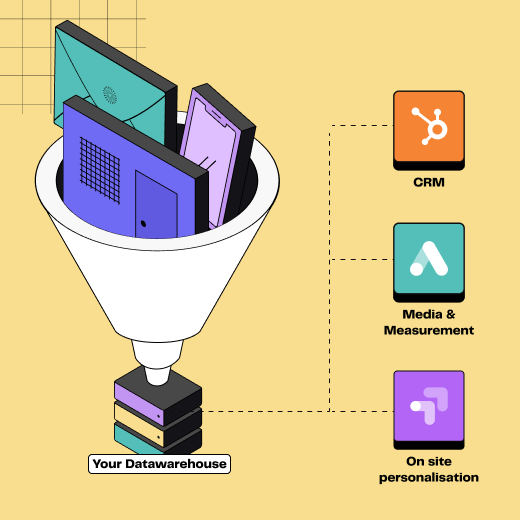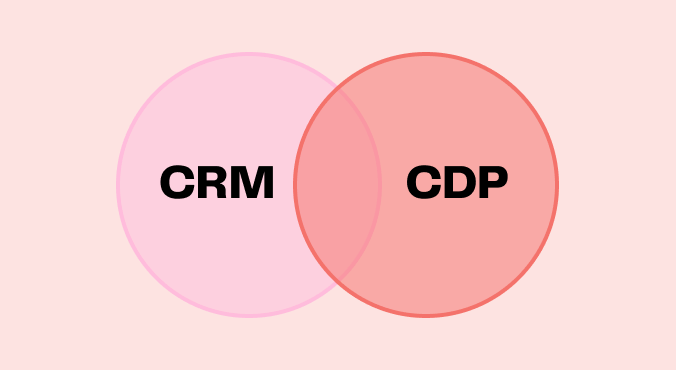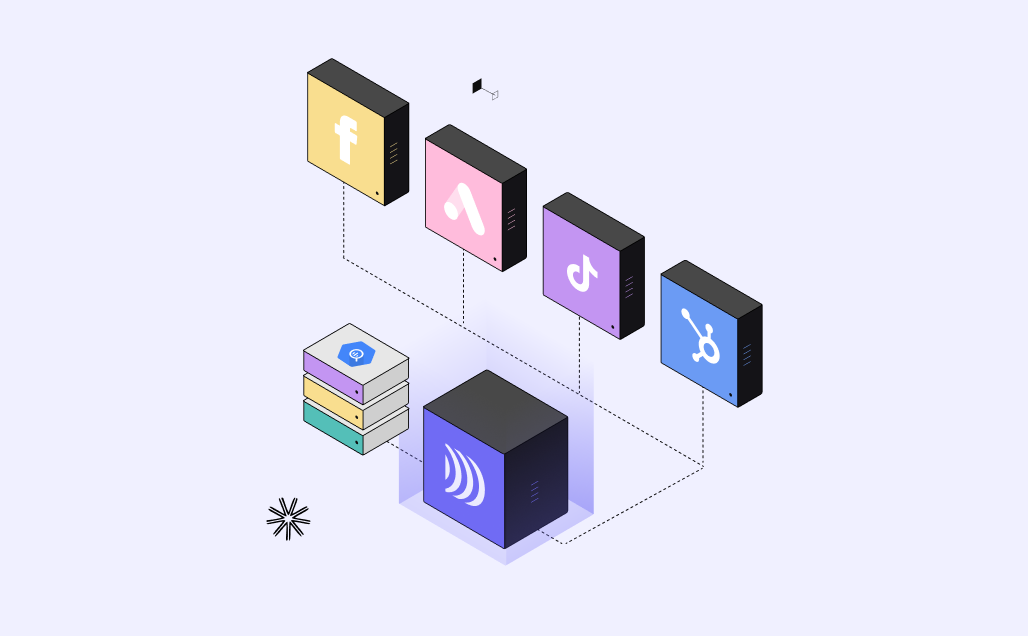
What are the options to activate data?
4min • Feb 15, 2024

Alexandra Augusti
Strategy & Operations Manager
We've already talked about the importance of using your data in your business platforms. Of course, the question that often arises is how to get there.
Several methods have low entry barriers and can be beneficial for small businesses that require minimal connections. However, as operations scale up, problems can quickly arise if the tool used is not designed for the job. As far as I’m concerned, I’m convinced that selecting a tool that can adapt to usage and grow with your business is crucial.
👉🏼 Here's an overview of the methods used to enrich marketing, sales, CRM and support platforms with data.
CSV/Excel Uploads
Of course it’s basic! But it can be considered for specific and ad hoc needs. Manually upload data files in common formats like CSV or Excel to advertising / business platforms remains one possibility. This is mainly suitable for smaller-scale operations, as it is really time-consuming (especially if you need fresh data on a regular basis) and may cause reliability problems.
This method does not allow to send all types of data (for instance conversions data to advertising platforms). It therefore doesn't provide a complete funnel view, especially for companies operating both online and offline.
iPaaS tools
Integration Platform as a Service (iPaaS) is a platform that links software applications, enabling a particular trigger in one tool to elicit a specific response in another. For instance, an interaction with your LinkedIn page can automatically create a new contact in your Pipedrive CRM.
iPaaS can connect applications via user-friendly APIs, which is really great if you’re talking about a simple point-to-point integration without dependencies.
Yet, as workflows become complex, users need knowledge of APIs, negating the no-code benefit. This is due to iPaaS using imperative syncing, requiring clear mapping of each step, often involving understanding of APIs and coding concepts like “loops” and “lists”, visualized rather than coded.
iPaaS has other limitations:
It's not designed for large-volume batch updates, which can become extremely costly if you do so
It doesn't utilize a Customer 360, potentially leading to inconsistent customer experiences.
It operates like a "black box", which can cause governance and quality issues.
If you'd like to find out more, we've already written a comparison between iPaaS and Reverse ETL.
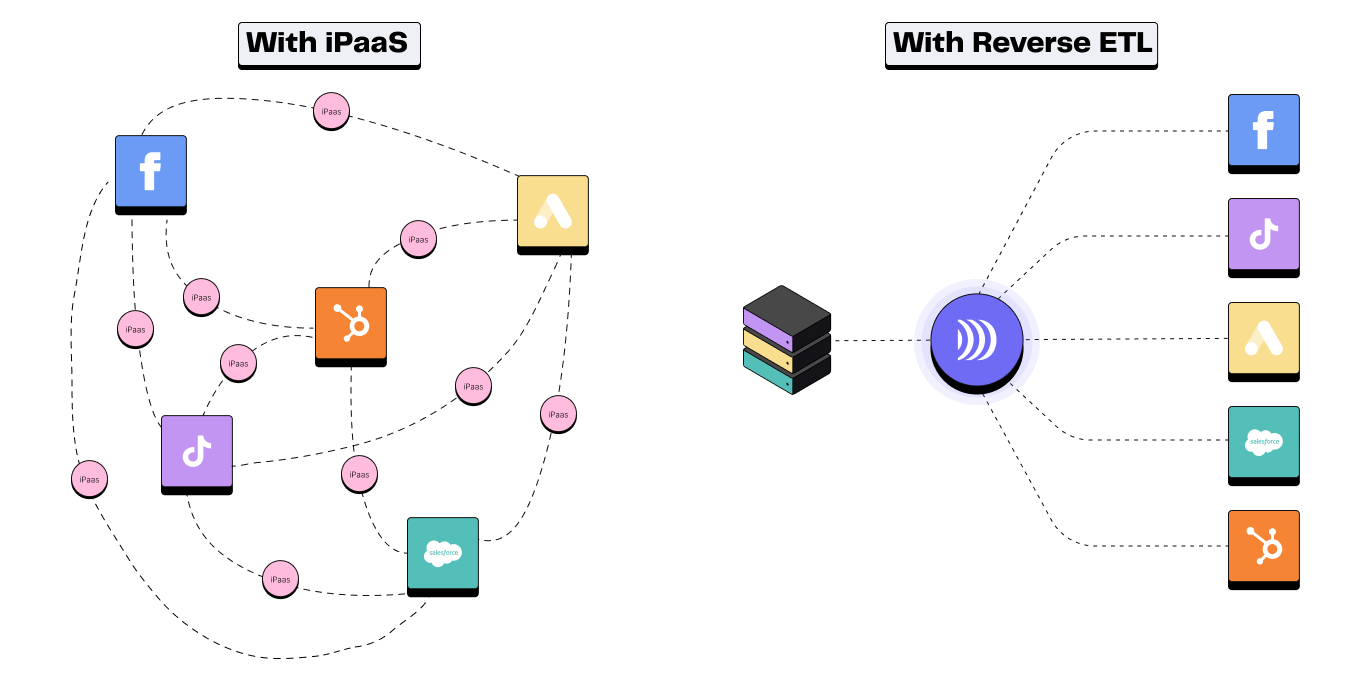
iPaaS vs. Reverse ETL
Direct Integration
Another possibility to send data to business platforms is to establish direct connections between your systems and advertising platforms using APIs or SDKs.
This solution may seem like a good idea because it seamlessly integrates with your current data stack and addresses issues related to governance and data quality.
Yet, this method requires a lot development (which must be replicated for each connector) and is complex to maintain (as APIs or SDKs are constantly evolving).
If your goal is to free up time for your data teams and empower your marketing teams, this solution is definitely not the right choice. It kills velocity for both teams:
Engineers will spend most of their time maintaining pipelines
Marketing teams won’t be able to autonomously implement their growth use cases.
Traditional CDPs
A Customer Data Platform is a packaged software system that stores, aggregates and models custom data from disparate systems. It provides a unified view and help for seamless integration with advertising platforms.
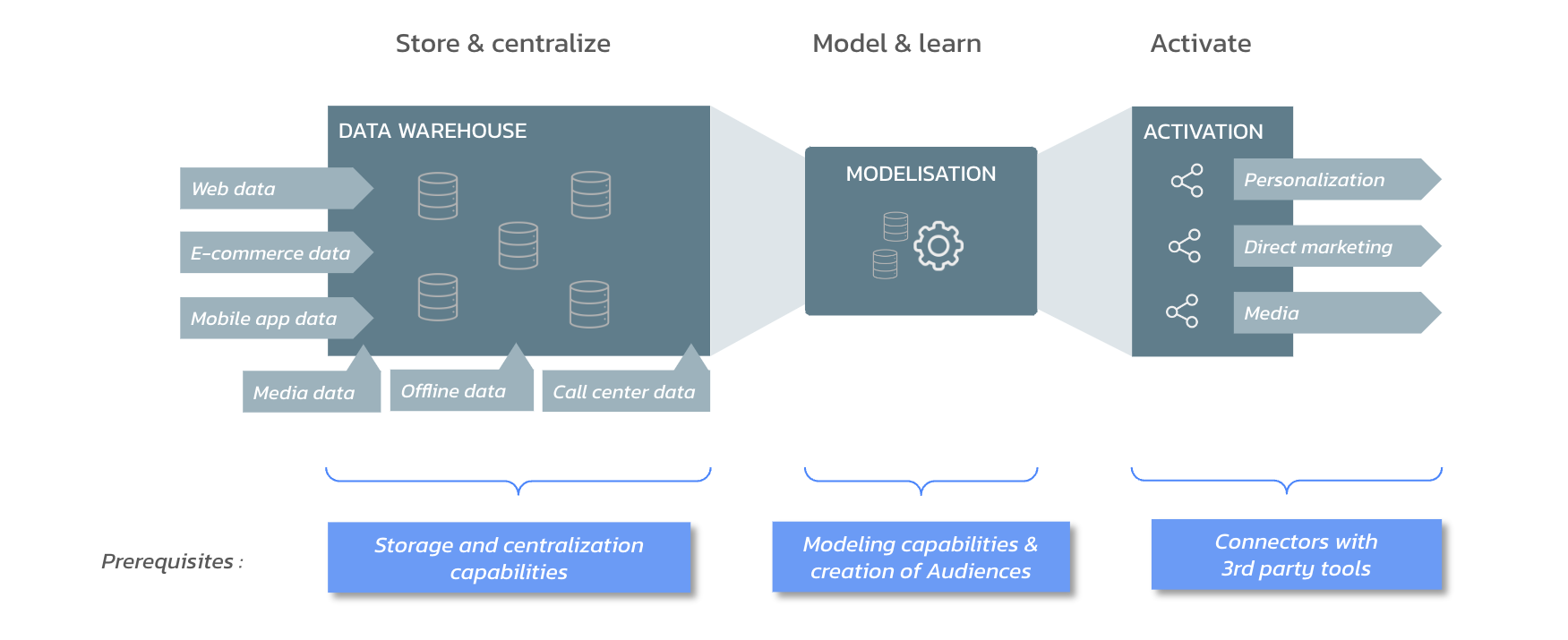
Schematic diagram of a CDP
Yet, as I’ve already mentioned in another article, traditional CDP come with several limitations:
Can be hard to implement and operate because of rigid data models
Can lead to inconsistencies because of duplicated data
Can be really expensive
Reverse ETLs
Reverse ETL (Extract, Transform, Load) is a process where data is extracted from a company's storage systems (data warehouse, data lake, database, etc.) and loaded into various business platforms.
Architecturally, all Data Activation platforms are powered by Reverse ETL to copy data from your existing data stores and syncing it to your destinations.
This method is flexible and simplifies the task of integration by avoiding for the data teams to build and maintain integrations.
Yet, Reverse ETL may lack certain functionalities in “basic” plans. Marketing teams may need the involvement of the data team to write the SQL needed to extract their data and configure their data pipelines, if they don’t understand the matching principle.
Composable CDP
To address this limitation, a new type of tool has just emerged: the Composable CDP.
💡The reverse ETL process is a component of the Composable CDP. This platform is a combination of a data warehouse and a reverse ETL process and is designed for business teams.
A composable CDP mainly works as a traditional CDP, with the same core functions: data integration, data centralization and data activation. Yet, it leverages the data repository of a data warehouse, which already contains a detailed map of the customer journey. Instead of operating as a separate entity, a composable CDP integrates seamlessly with the existing data stack**.**
It allows to have the experience of a traditional CDP but is easy to implement, simple to operate and has an adaptative pricing.
Other data activation solutions lack comprehension of activities outside your clickstream data. Your business is more complex than just online actions. It includes offline activities (in-store sales, phone support, etc.), data science models designed by your team for predictions and recommendations, and unique first-party attributes for each user. All this data is stored in the data warehouse - it would be foolish not to use it.
To summarize and compare the various solutions presented under different criteria, we have built the following table:
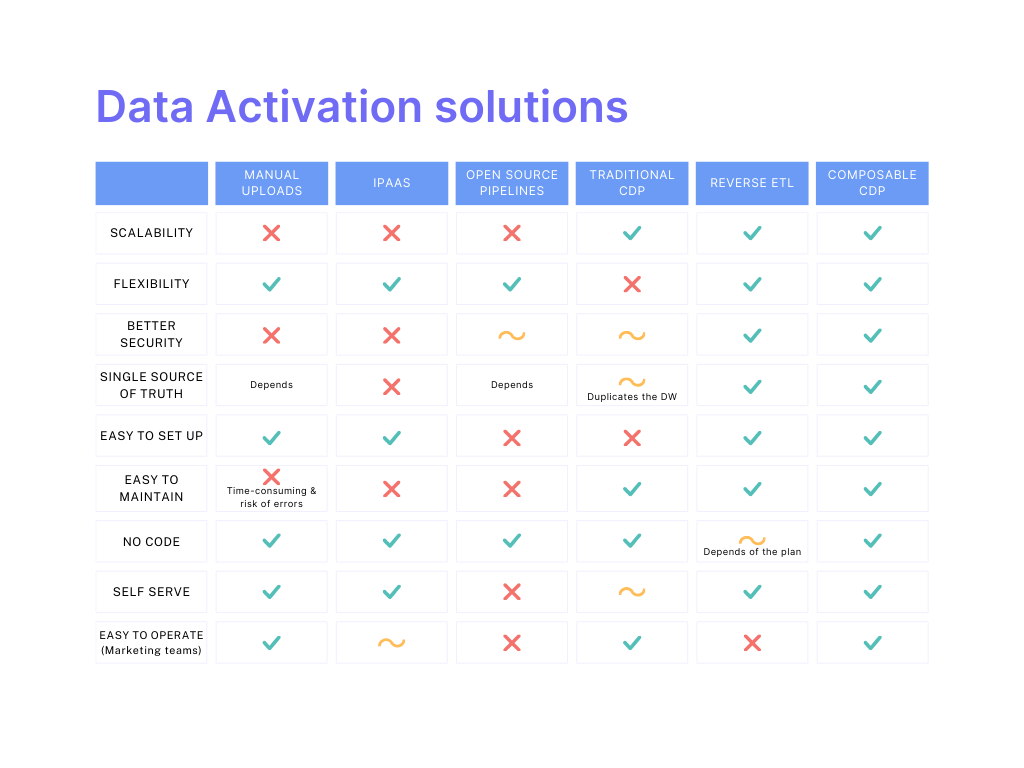
Data Activation Solutions and Comparisons
If you'd like to see other comparison criteria for data activation solutions, please don't hesitate to contact me: alexandra@dinmo.com
Conclusion
I hope you find this quick overview useful. Don't hesitate to consult our additional resources on the tools mentioned in our various blog posts.
In a nutshell, if you have to choose the Activation tool right tool for your company:
Think about your current needs
Think about future needs
Don't neglect the security aspect
Find a solution that is easy to use for the people who will actually use it













